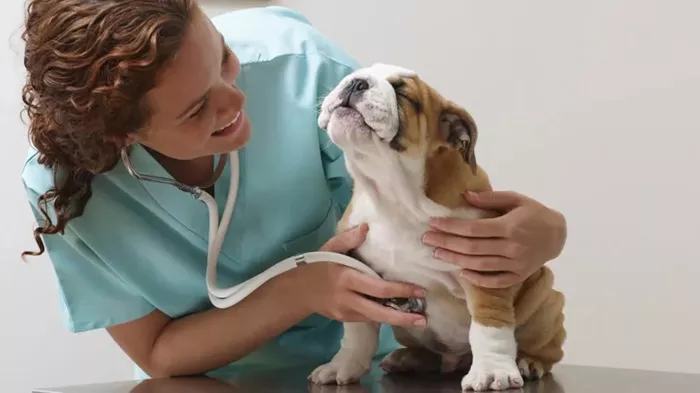As a pet owner, you want the best care for your furry friends. One way to ensure they receive top-notch medical attention without the financial burden is through pet insurance. However, there are different ways pet insurance works, and one popular option is direct pay pet insurance. But what exactly is direct pay pet insurance, and how does it differ from traditional pet insurance?
In this article, we will explain direct pay pet insurance in detail, how it works, its pros and cons, and how it compares to other insurance options. We’ll also guide you on what to look for when choosing the best pet insurance for your pet, focusing on the direct pay option.
What is Direct Pay Pet Insurance?
Direct pay pet insurance is a unique approach to covering your pet’s medical expenses. Instead of the pet owner paying the vet upfront and then submitting a claim for reimbursement, direct pay insurance allows the insurance company to pay the veterinarian directly. This eliminates the need for the pet owner to front the cost of treatment and wait for reimbursement, which can be a major hassle.
How Does Direct Pay Pet Insurance Work?
In traditional pet insurance, you would pay for veterinary care upfront, submit the receipts to your insurance provider, and wait for the company to reimburse you. With direct pay pet insurance, the insurer takes care of the payment directly with the vet, provided they are part of the insurance company’s network or approved list.
Here’s how the process typically works:
You visit the vet: If your pet needs medical treatment, you bring them to a vet who accepts direct pay insurance.
The insurance company is notified: The vet will communicate with the insurance provider, notifying them of the treatment needed for your pet.
The insurance pays the vet: After receiving the details, the insurance company processes the claim and pays the veterinarian directly, covering the agreed-upon percentage of the costs.
You cover the difference (if any): Depending on your policy, you may need to pay a portion of the bill out-of-pocket, such as the deductible, co-pay, or any costs not covered by the policy.
This setup is beneficial because it reduces the financial burden on pet owners who may not have the funds to pay a large vet bill upfront. Instead of waiting weeks for reimbursement, the direct pay system ensures that treatment can proceed without delay.
What Are the Advantages of Direct Pay Pet Insurance?
1. Faster Treatment Approval
With traditional insurance, you might have to wait for approval or reimbursement before you can afford certain treatments. Direct pay pet insurance removes this barrier by allowing immediate treatment approval, as the insurer handles payment directly with the vet.
2. Less Stress for Pet Owners
The process of paying upfront and waiting for reimbursement can be stressful, especially during emergencies. Direct pay insurance alleviates that stress by ensuring that you won’t have to come up with large sums of money at the time of treatment.
3. No Need for Claim Submissions
In a traditional insurance setup, you are responsible for submitting claims to the insurance company, which can be a complicated and time-consuming process. With direct pay insurance, the insurance provider handles all of the paperwork, making it easier for you.
4. Financial Relief
You won’t have to worry about paying a hefty bill upfront and then dealing with the uncertainty of when you’ll be reimbursed. This immediate financial relief can be crucial in an emergency, especially when the costs of pet care can quickly escalate.
5. Convenience
Direct pay pet insurance is a more seamless experience. There’s no need to file claims, provide receipts, or track reimbursements. The vet handles all communication with the insurer, and you simply focus on your pet’s health.
What Are the Disadvantages of Direct Pay Pet Insurance?
While direct pay pet insurance offers several benefits, it also comes with some potential drawbacks that pet owners should consider.
1. Limited Vet Network
One of the main downsides of direct pay pet insurance is that not all veterinarians accept this type of payment system. Insurers usually have a network of vets that work with direct pay policies, so if your regular vet isn’t part of this network, you may need to find a new provider or pay the vet upfront and seek reimbursement later.
2. Higher Premiums
Direct pay insurance tends to come with higher premiums compared to traditional reimbursement-based policies. This is because the insurer is taking on more risk by covering costs immediately, rather than after the fact. As a result, pet owners may face higher monthly premiums to access this convenience.
3. Less Flexibility
Direct pay insurance might offer less flexibility when it comes to choosing where you receive care. If your pet needs specialized treatment or you prefer a vet who isn’t part of the insurer’s network, you may need to pay out-of-pocket and then wait for reimbursement, which defeats the purpose of direct pay insurance.
4. Potential for Denied Payments
Even though the insurance company pays directly to the vet, there’s always the possibility that a claim could be denied if it doesn’t meet the insurer’s criteria. In such cases, you may still be required to cover the costs, and then you’ll have to go through the process of disputing the denial or seeking reimbursement.
How Does Direct Pay Pet Insurance Compare to Traditional Pet Insurance?
1. Payment Process
In traditional pet insurance, you pay upfront, and the insurer reimburses you after the claim is processed. Direct pay insurance eliminates this step by paying the vet directly, which can be particularly useful in emergencies.
2. Reimbursement Time
Traditional pet insurance can have a long waiting period for reimbursement—sometimes several weeks—depending on the insurer. Direct pay insurance, on the other hand, allows immediate payment, so you don’t have to wait to get reimbursed.
3. Claim Filing
In traditional insurance policies, you have to file claims and deal with the paperwork, which can be confusing and time-consuming. With direct pay insurance, this burden is shifted to the vet and the insurer, leaving you with a simpler process.
4. Vet Choice
Traditional insurance generally provides more flexibility when it comes to choosing your vet. You can visit any licensed veterinarian, as long as they accept your insurance. Direct pay insurance often limits you to a specific network of providers who are in the insurer’s system, which could reduce your choices.
5. Cost
Direct pay insurance policies typically come with higher premiums compared to traditional reimbursement-based plans. The insurer’s willingness to cover costs upfront comes at a premium, so pet owners who choose this option may pay more in monthly premiums.
What Should You Consider Before Choosing Direct Pay Pet Insurance?
1. Your Pet’s Medical Needs
If your pet is healthy and only requires occasional check-ups, traditional pet insurance may be a better and more affordable option. However, if your pet has a medical condition or is prone to accidents, direct pay insurance could be a good choice, as it ensures that you don’t have to worry about affording treatments when they’re needed.
2. Your Vet’s Availability
Before opting for direct pay insurance, it’s important to confirm whether your vet accepts the insurance company’s direct payment system. If your vet is not part of the network, you may be left to pay upfront and wait for reimbursement.
3. The Cost of Premiums
While direct pay insurance can be incredibly convenient, it’s essential to weigh the cost against the benefits. Make sure the higher premiums are justified by your financial situation and the level of convenience it offers.
4. The Claims Process
Ensure that you fully understand how the claims process works with direct pay insurance. While most policies pay the vet directly, it’s important to check if there are any steps you need to take, such as providing medical records or notifying the insurer beforehand.
5. Veterinary Care Availability
If you have a pet with special medical needs or a chronic condition, it may be important to choose a policy that allows you to work with a broader range of specialists. Direct pay policies may limit your options if your vet is not part of the insurer’s network, so it’s worth considering how this might impact your pet’s care.
Conclusion
Direct pay pet insurance offers a convenient and hassle-free way to handle your pet’s medical expenses. By eliminating the need for upfront payment and reimbursement, it provides peace of mind and simplifies the process for pet owners. However, it’s not without its drawbacks, such as higher premiums and limited vet networks.
If you’re looking for a pet insurance policy that prioritizes convenience and quick payment, direct pay pet insurance might be the right choice for you. However, if you prefer more flexibility in choosing your vet or are on a tighter budget, traditional pet insurance may be a better fit. Ultimately, the best policy for your pet will depend on their health needs, your financial situation, and your preferences for convenience and coverage.
Related topic:














